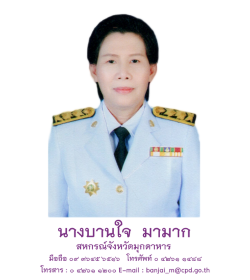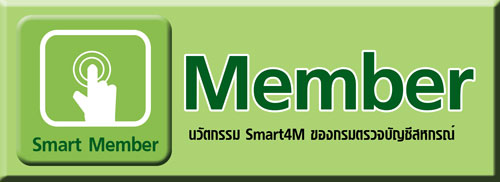Confirm text replacement with template category text
All the text in the message will be deleted and replaced by text from category template.
Topic History of:
Max. showing the last 6 posts - (Last post first)
- CharlesHoaxy
‘Dyson spheres’ were theorized as a way to detect alien life. Scientists say they’ve found potential evidence
<a href=https://kpaken18.at>kraken15.at
What would be the ultimate solution to the energy problems of an advanced civilization? Renowned British American physicist Freeman Dyson theorized it would be a shell made up of mirrors or solar panels that completely surrounds a star — harnessing all the energy it produces.
“One should expect that, within a few thousand years of its entering the stage of industrial development, any intelligent species should be found occupying an artificial biosphere which completely surrounds its parent star,” wrote Dyson in a 1960 paper in which he first explained the concept.
w-kraken14.at
kraken
If it sounds like science fiction, that’s because it is: Dyson took the idea from Olaf Stapledon’s 1937 novel “Star Maker,” and he was always open about that. The late scientist was a professor emeritus at the Institute of Advanced Study in Princeton, New Jersey.
Still, coming from a thinker who some in the scientific community say might have been worthy of a Nobel Prize early in his career, the concept took hold and the hypothetical megastructures became known as Dyson spheres, even though the physicist later clarified that they would actually consist of “a loose collection or swarm of objects traveling on independent orbits around the star.”
In his paper, Dyson also noted that Dyson spheres would give off waste heat detectable as infrared radiation, and suggested that looking for that byproduct would be a viable method for searching for extraterrestrial life. However, he added that infrared radiation by itself would not necessarily mean extraterrestrial intelligence, and that one of the strongest reasons for searching for such sources was that new types of natural astronomical objects might be discovered.
“Scientists (at the time) were largely receptive, not to the likelihood that alien civilisations would be found to exist, but that a search for waste heat would be a good place to look,” said George Dyson, a technology writer and author and the second of Dyson’s six children, via email. “Science fiction, from ‘Footfall’ to ‘Star Trek,’ took the idea and ran with it, while social critics adopted the Dyson sphere as a vehicle for questioning the wisdom of unlimited technological growth.”
- AndrewWeelt
African elephants use names to call each other, study suggests
<a href=https://trip-scan.top>трипскан darknet
Wild African elephants may address each other using individualized calls that resemble the personal names used by humans, a new study suggests.
While dolphins are known to call one another by mimicking the signature whistle of the dolphin they want to address, and parrots have been found to address each other in a similar way, African elephants in Kenya may go a step further in identifying one another.
These elephants learn, recognize and use individualized name-like calls to address others of their kind, seemingly without using imitation, according to the study published Monday in the journal Nature Ecology and Evolution.
The most common type of elephant call is a rumble, of which there are three sub-categories. So-called contact rumbles are used to call another elephant that is far away or out of sight. Greeting rumbles are used when another elephant is within touching distance. Caregiver rumbles are used by an adolescent or adult female toward a calf she is caring for, according to the study.
The researchers looked at these three types of rumbles, using a machine-learning model to analyze recordings of 469 calls made by wild groups of females and calves in Amboseli National Park and Samburu and Buffalo Springs National Reserves between 1986 and 2022. All the elephants could be individually identified by the shape of their ears, as they had been monitored continuously for decades, according to the study.
The idea was that “if the calls contained something like a name, then you should be able to figure out who the call was addressed to just from the acoustic features of the call itself,” said lead study author Mickey Pardo, an animal behaviorist and postdoctoral fellow at Cornell University in New York.
The researchers found that the acoustic structure of calls varied depending on who the target of the call was.
The machine-learning model correctly identified the recipient of 27.5% of calls analyzed, “which may not sound like that much, but it was significantly more than what the model would have been able to do if we had just fed it random data,” Pardo told CNN.
“So that suggests that there’s something in the calls that’s allowing the model to identify who the intended receiver of the call was,” he added.
- Andrewcen
The original occupant of an Egyptian sarcophagus was unknown. Then a tiny ornament revealed a very big name
<a href=https://tripscan.biz>трипскан даркнет
A sarcophagus discovered in 2009 in an Egyptian burial chamber came with a complicated history: Ancient writing on the stone container showed that it had been used twice, but while its second occupant, the 21st dynasty high priest Menkheperre, was known, the first owner had remained a mystery — until now.
New clues have surfaced as a result of Frederic Payraudeau, an associate professor in Egyptology at Sorbonne University in Paris, reexamining a fragment of the granite sarcophagus and deciphering the hieroglyphs engraved on it. Tucked away in the cartouche, an oval-shaped ornament often found in tombs, he found a name of a very recognizable figure: Ramesses II.
Payraudeau said the inscription is evidence that the artifact was originally from the tomb of the famous pharaoh and had been reused after looting.
“Clearly, this was the sarcophagus of a king,” Payraudeau said. “The cartouche dates back to its first usage, and contains Ramesses II’s throne name, Usermaatra. He was the only pharaoh to use this name during his time, so that cleared any doubt that it was his sarcophagus.”
The findings, published in the journal Revue d’Egyptologie, add to the lore of Ramesses II, also known as Ozymandias and one of Egypt’s most celebrated pharaohs. It also fills a gap in our understanding of how sarcophagi were used to entomb kings.
Ramesses II was the third king of the 19th dynasty, and his reign — from 1279 to 1213 BC — was the second longest in the history of Egypt. He was known for his victorious military campaigns and an interest in architecture, which led him to order up important monuments and statues of himself. His mummy is at the National Museum of Egyptian Civilization in Cairo.
Another coffin belonging to Ramesses II was discovered in 1881 near Luxor, but the sarcophagus fragment analyzed in the study was found in Abydos, a city about 40 miles (64 kilometers) to the northwest in a straight line.
“That is less bizarre than it seems,” Payraudeau said, “because we know his tomb was looted in the antiquity, maybe two centuries after his death, and he’s certainly not the only king to have been looted.”
The granite fragment, which is a nearly complete part of the longer side of the sarcophagus, was previously believed to have belonged to a prince. “But I always found this strange, because the decoration on this carefully crafted piece was indicative of a king, and had elements traditionally reserved for kings,” Payraudeau said.
- Bryanroulp
The original occupant of an Egyptian sarcophagus was unknown. Then a tiny ornament revealed a very big name
<a href=https://tripscan.biz>трипскан сайт
A sarcophagus discovered in 2009 in an Egyptian burial chamber came with a complicated history: Ancient writing on the stone container showed that it had been used twice, but while its second occupant, the 21st dynasty high priest Menkheperre, was known, the first owner had remained a mystery — until now.
New clues have surfaced as a result of Frederic Payraudeau, an associate professor in Egyptology at Sorbonne University in Paris, reexamining a fragment of the granite sarcophagus and deciphering the hieroglyphs engraved on it. Tucked away in the cartouche, an oval-shaped ornament often found in tombs, he found a name of a very recognizable figure: Ramesses II.
Payraudeau said the inscription is evidence that the artifact was originally from the tomb of the famous pharaoh and had been reused after looting.
“Clearly, this was the sarcophagus of a king,” Payraudeau said. “The cartouche dates back to its first usage, and contains Ramesses II’s throne name, Usermaatra. He was the only pharaoh to use this name during his time, so that cleared any doubt that it was his sarcophagus.”
The findings, published in the journal Revue d’Egyptologie, add to the lore of Ramesses II, also known as Ozymandias and one of Egypt’s most celebrated pharaohs. It also fills a gap in our understanding of how sarcophagi were used to entomb kings.
Ramesses II was the third king of the 19th dynasty, and his reign — from 1279 to 1213 BC — was the second longest in the history of Egypt. He was known for his victorious military campaigns and an interest in architecture, which led him to order up important monuments and statues of himself. His mummy is at the National Museum of Egyptian Civilization in Cairo.
Another coffin belonging to Ramesses II was discovered in 1881 near Luxor, but the sarcophagus fragment analyzed in the study was found in Abydos, a city about 40 miles (64 kilometers) to the northwest in a straight line.
“That is less bizarre than it seems,” Payraudeau said, “because we know his tomb was looted in the antiquity, maybe two centuries after his death, and he’s certainly not the only king to have been looted.”
The granite fragment, which is a nearly complete part of the longer side of the sarcophagus, was previously believed to have belonged to a prince. “But I always found this strange, because the decoration on this carefully crafted piece was indicative of a king, and had elements traditionally reserved for kings,” Payraudeau said.
- StevenciX
African elephants use names to call each other, study suggests
<a href=https://trip-scan.top>tripscan тор
Wild African elephants may address each other using individualized calls that resemble the personal names used by humans, a new study suggests.
While dolphins are known to call one another by mimicking the signature whistle of the dolphin they want to address, and parrots have been found to address each other in a similar way, African elephants in Kenya may go a step further in identifying one another.
These elephants learn, recognize and use individualized name-like calls to address others of their kind, seemingly without using imitation, according to the study published Monday in the journal Nature Ecology and Evolution.
The most common type of elephant call is a rumble, of which there are three sub-categories. So-called contact rumbles are used to call another elephant that is far away or out of sight. Greeting rumbles are used when another elephant is within touching distance. Caregiver rumbles are used by an adolescent or adult female toward a calf she is caring for, according to the study.
The researchers looked at these three types of rumbles, using a machine-learning model to analyze recordings of 469 calls made by wild groups of females and calves in Amboseli National Park and Samburu and Buffalo Springs National Reserves between 1986 and 2022. All the elephants could be individually identified by the shape of their ears, as they had been monitored continuously for decades, according to the study.
The idea was that “if the calls contained something like a name, then you should be able to figure out who the call was addressed to just from the acoustic features of the call itself,” said lead study author Mickey Pardo, an animal behaviorist and postdoctoral fellow at Cornell University in New York.
The researchers found that the acoustic structure of calls varied depending on who the target of the call was.
The machine-learning model correctly identified the recipient of 27.5% of calls analyzed, “which may not sound like that much, but it was significantly more than what the model would have been able to do if we had just fed it random data,” Pardo told CNN.
“So that suggests that there’s something in the calls that’s allowing the model to identify who the intended receiver of the call was,” he added.
- Wilburrit
African elephants use names to call each other, study suggests
<a href=https://trip-scan.top>tripscan top
Wild African elephants may address each other using individualized calls that resemble the personal names used by humans, a new study suggests.
While dolphins are known to call one another by mimicking the signature whistle of the dolphin they want to address, and parrots have been found to address each other in a similar way, African elephants in Kenya may go a step further in identifying one another.
These elephants learn, recognize and use individualized name-like calls to address others of their kind, seemingly without using imitation, according to the study published Monday in the journal Nature Ecology and Evolution.
The most common type of elephant call is a rumble, of which there are three sub-categories. So-called contact rumbles are used to call another elephant that is far away or out of sight. Greeting rumbles are used when another elephant is within touching distance. Caregiver rumbles are used by an adolescent or adult female toward a calf she is caring for, according to the study.
The researchers looked at these three types of rumbles, using a machine-learning model to analyze recordings of 469 calls made by wild groups of females and calves in Amboseli National Park and Samburu and Buffalo Springs National Reserves between 1986 and 2022. All the elephants could be individually identified by the shape of their ears, as they had been monitored continuously for decades, according to the study.
The idea was that “if the calls contained something like a name, then you should be able to figure out who the call was addressed to just from the acoustic features of the call itself,” said lead study author Mickey Pardo, an animal behaviorist and postdoctoral fellow at Cornell University in New York.
The researchers found that the acoustic structure of calls varied depending on who the target of the call was.
The machine-learning model correctly identified the recipient of 27.5% of calls analyzed, “which may not sound like that much, but it was significantly more than what the model would have been able to do if we had just fed it random data,” Pardo told CNN.
“So that suggests that there’s something in the calls that’s allowing the model to identify who the intended receiver of the call was,” he added.












